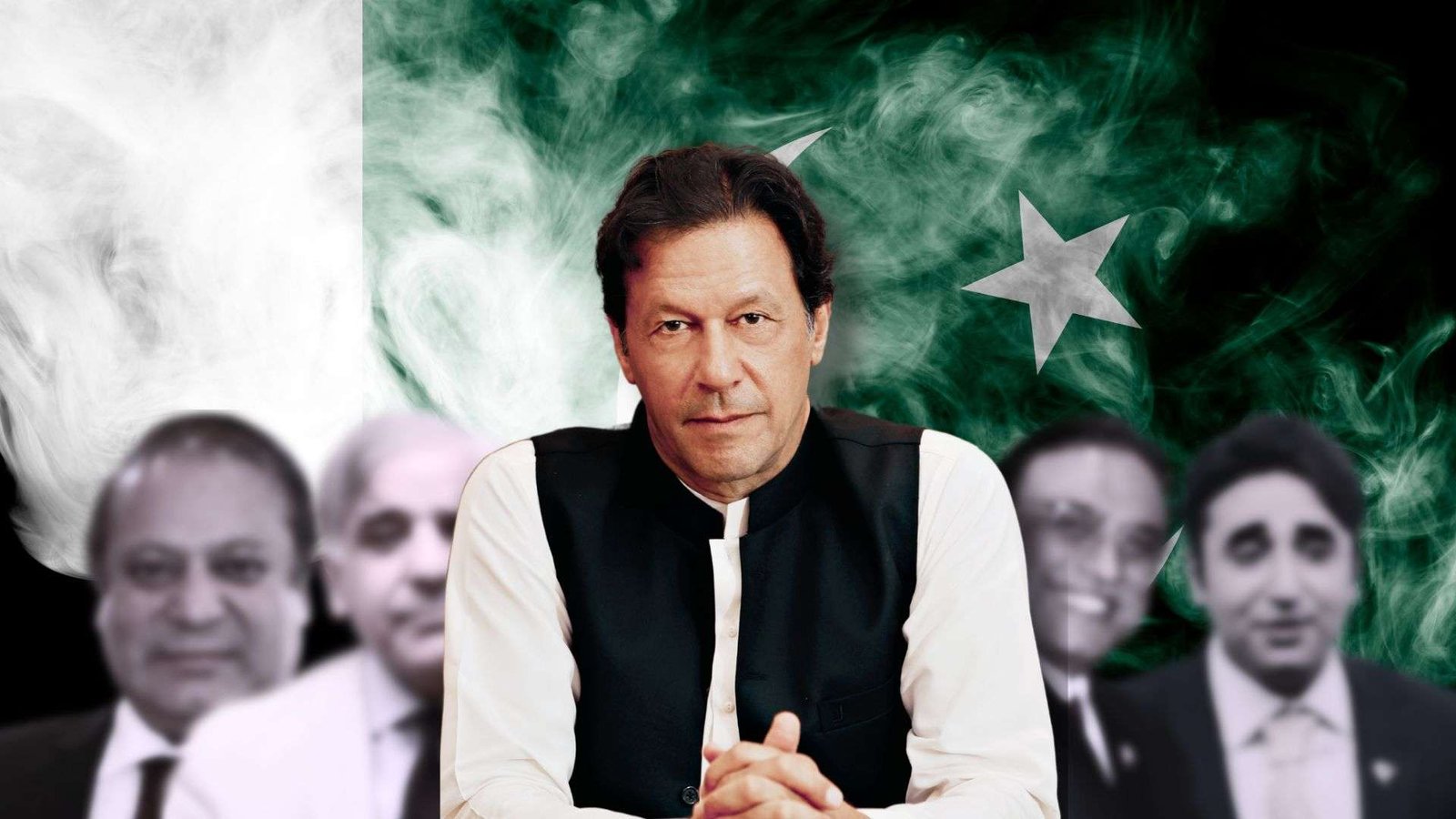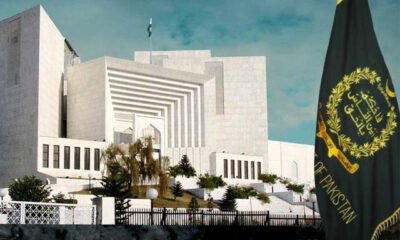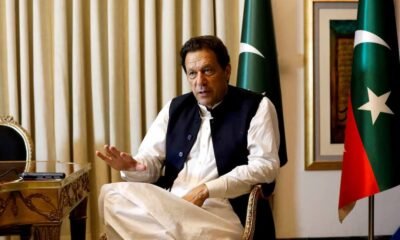Politics
Regime Change Operation in Pakistan: Reflections after 2 years
Looking back over the past 2 years, the orchestrators & the collaborators of the regime change operation have done precisely what they professed to have ousted Imran Khan’s government for.

April 10, 2024, marks two years since one of the darkest days in Pakistan’s history: the culmination of the U.S.-backed regime change operation in Pakistan. It marked the beginning of the events that led to the erosion of democracy, the rule of law, and constitutional norms in Pakistan. This period witnessed grave human rights violations, restrictions on civil liberties, widespread socio-political unrest, and an unprecedented economic crisis.
The Regime Change Operation in Pakistan, orchestrated by Pakistan’s military under pressure from the United States (U.S.) administration, targeted then Prime Minister Imran Khan. The U.S. had demanded Imran Khan’s removal due to his pursuit of an independent foreign policy, which clashed with American interests in the region. Khan’s reluctance to align with U.S. directives, particularly his refusal to allow U.S. military basis in Pakistan, and his neutral stance on the Russia-Ukraine conflict, was seen as a concern to the U.S. and led to the ultimatum from the U.S. administration.
Regime change operations are always made successful with the help of local collaborators. In the case of Pakistan too, local collaborators, elements within the Pakistani military and the Pakistan Democratic Movement (PDM), an alliance of 13 parties formed in 2020, were central in facilitating the regime change operation.
Prelude to the Regime Change Operation in Pakistan
The rumblings of introducing a no-confidence motion against Prime Minister Imran Khan surfaced in 2021. However, the PMLN dismissed such a move as “impractical,” with its leaders stating that the no-confidence motion could not succeed without the backing of the Pakistani establishment – the deep state composed of Pakistan’s military, intelligence agencies led by the Inter-Services Intelligence (ISI), and other pro-military government officials and civilians.
The PDM was an unholy alliance between parties with disparate ideologies and a history of antagonism. Even their voters and supporters were unwilling to accept a coalition with the very entities that they had, at least on the face, despised and attacked over the years.
With this background, the PDM was brought together by the efforts of the Pakistani military, glued together by a shared desire for power, amnesty on corruption charges, and electoral legislation favouring their interests.
It took significant efforts on the part of the military to iron out the differences among the PDM parties, dispelling their doubts and differences with each other, and eventually, table the no-confidence motion against a democratically elected prime minister.
This manoeuvre masked a blatant assault on Pakistan’s democracy, garbed under the guise of legal and democratic proceedings endorsed by Pakistan’s military apparatus.
The Pretext for the Regime Change Operation in Pakistan
The pretext for the no-confidence motion against Imran Khan’s government included false narratives related to Pakistan’s economy, suppression of democratic freedom, and the alleged plan to rig elections by appointing an army chief of his liking. However, these allegations lacked substantial evidence and were used as a cover for the actual motives behind the regime change.
If anything, Imran Khan’s PTI government managed to stabilize a bankrupted economy despite the COVID-19 pandemic and the commodity super cycle. He had also taken measures to prevent electoral rigging and fraud, with initiatives such as the introduction of electoral voting machines.
Despite the facts, this false narrative was disseminated by the media, which prioritized its self-interests over truth. These were fed to the public, in an attempt to provide a facade for the regime change operation.
Reflecting on the aftermath of the Regime Change Operation
All the allegations, initially directed at Imran Khan and used as the pretext for tabling the no-confidence motion, ironically materialized post-regime change operation.
Foremost, the economy that stabilized and saw robust growth during the last two years of PTI’s government went into a tailspin. FY2021 & FY2022 saw the two best consecutive years of GDP growth under a civilian government in Pakistan’s history, driven by strong economic activity, increased local productivity, and highest-ever exports. Additionally, record-high remittances from overseas Pakistanis further helped economic stability.
However, since the regime change operation, Pakistan’s economy has spiralled into turmoil. Key economic indicators such as GDP growth, exports, remittances, and large-scale manufacturing have all witnessed a sharp decline. Moreover, the depletion of forex reserves and the drastic depreciation of the Pakistani rupee against the US dollar have exacerbated the economic challenges. Meanwhile, inflation soared to its highest-ever value, making it incredibly difficult for people to survive amid large-scale layoffs and business shutdowns.
By September 2023, a staggering 12.5 million Pakistanis fell below the poverty line, defined at $3.25, with an additional 10 million being pushed into poverty by March 2024. According to the World Bank, 40% of Pakistan’s 240 million population now lives in poverty.
Secondly, since the removal of Imran Khan’s government through a US-backed regime change operation, Pakistan has plunged into the depths of severe democratic suppression, constitutional erosion, and the curtailment of civil liberties and human rights.
The crackdown on dissent has been ruthless, targeting political opponents, journalists, social media activists, or anyone voicing dissent. This crackdown has normalized intimidation, threats, harassment, abductions, and violence, with illegal home raids becoming commonplace.
Following the false-flag operation of May 9, more than 10,000 PTI workers and supporters were arbitrarily detained. Even after 11 months, many languish in jail and have been denied their basic & constitutional rights. The judicial system, instead of providing relief, has been complicit in prolonging detention through bogus charges and re-arrests.
For example, Sanam Javed, a PTI supporter, faces charges for inciting unrest in six locations spread across Lahore, Mianwali, and Faisalabad simultaneously. Similarly, PTI leader Aliya Hamza has been imprisoned for over 11 months, accused of instigating chaos in five different locations spanning Lahore, Raiwind, and Mianwali, all at the same time.
Additionally, hundreds of citizens have been subjected to military custody and are being tried in military courts in blatant violation of their constitutional rights.
At the same time, nearly the entire PTI was either forced underground or arbitrarily arrested and pushed to leave PTI under duress.
Finally, the assertions of election rigging after the appointment of a favourable army chief actually came true under the Shehbaz-led PDM government.
The subsequent events, including the appointment of a favourable army chief, the delay in the election from their constitutionally mandated period, the imposition of a biased caretaker setup, the disenfranchisement of millions of voters through terrible Supreme Court decisions, the sentencing of Imran Khan after sham trials, the manipulation of electoral processes, and the brazen disregard of the public mandate, have further deepened political instability and undermined democratic legitimacy in Pakistan.
The US-backed regime-change operation, orchestrated with the help of local collaborators, is undoubtedly one of the most tragic episodes in Pakistan’s history.
Despite facing significant challenges, Pakistan, under the PTI government, was on a promising trajectory to overcome those challenges and towards becoming a welfare state.
However, since the regime change operation, Pakistan has veered off course dramatically. What is more concerning is the determined effort of a powerful clique to maintain the status quo, even at the cost of ruling over the ruins. It is crucial for all, especially the international community, to amplify the voices of Pakistanis and highlight the dire state of affairs in the country.






